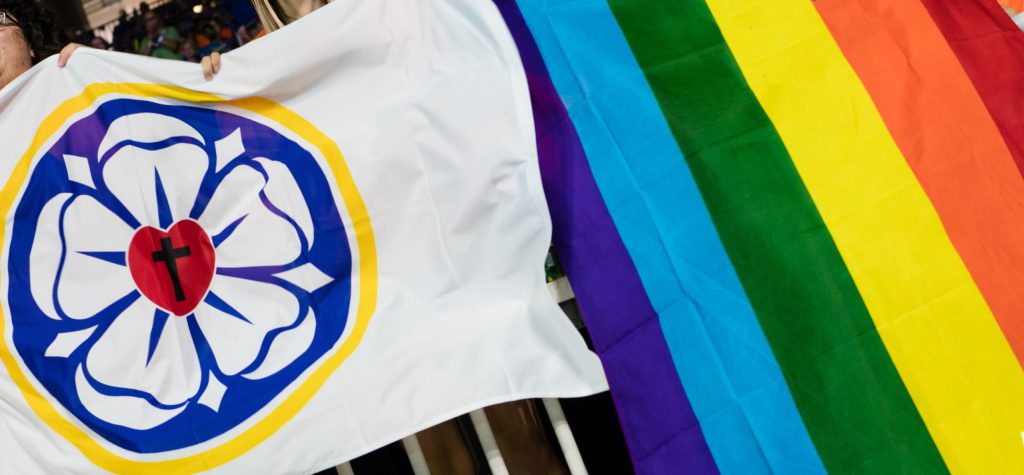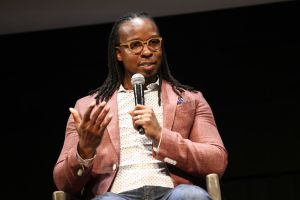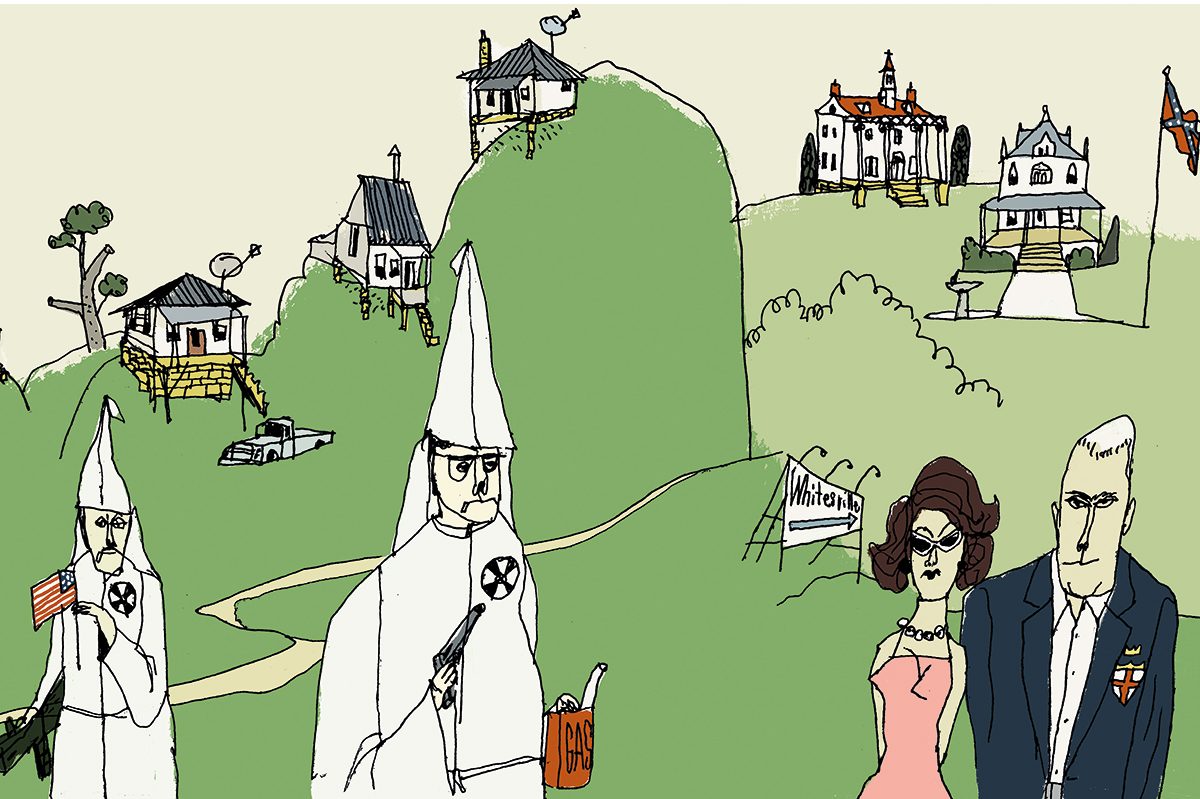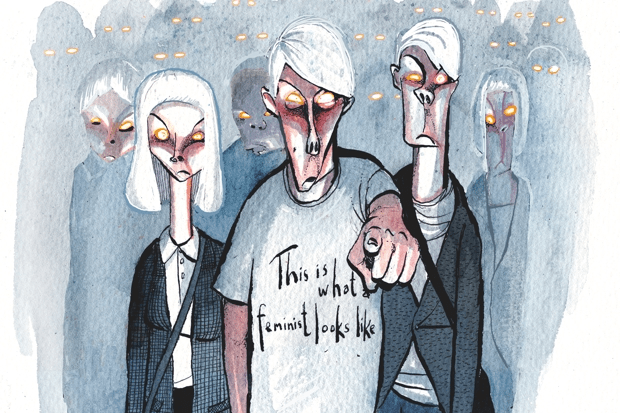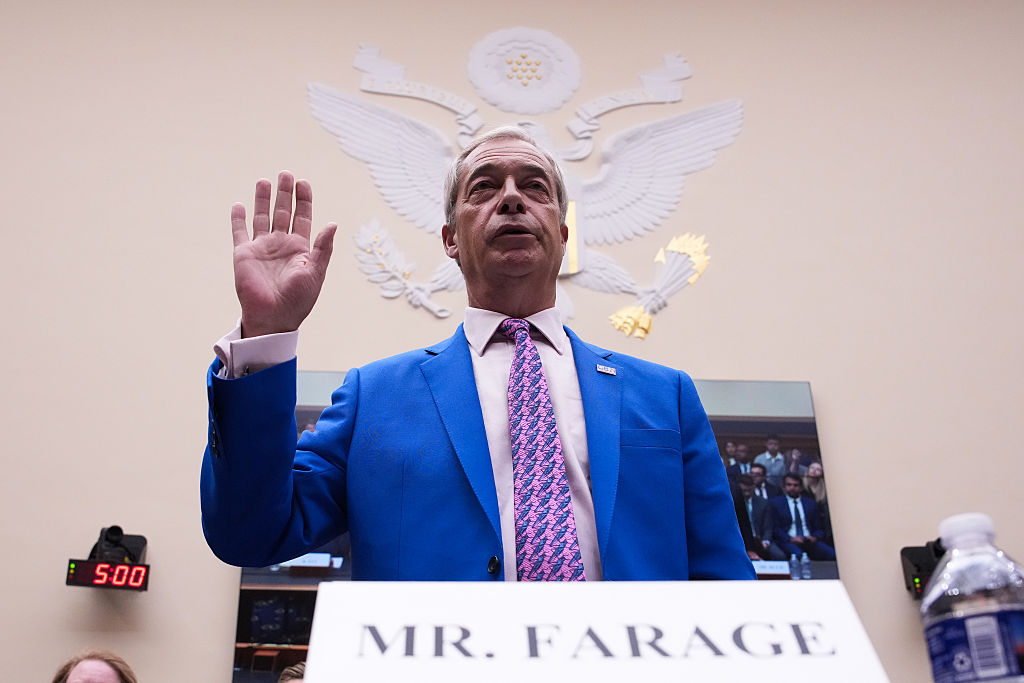Just when I thought woke, mainline American Protestantism couldn’t descend any further into self-parody, the liberal Evangelical Lutheran Church in America went and surprised me.
Here’s a summary, courtesy of Dr. Jordan B. Cooper, a pastor in one of the conservative rump denominations that didn’t join the ELCA:
Neurodivergent nonbinary trans pastor is made bishop. This individual then disciplines abusive latinxpastor. But this is unknowingly done on a Hispanic holiday and is thus racist. Woman archbishop rebukes bishop but isn’t harsh enough so is then also racist.
Wait, what?
It all started when Bishop Megan Rohrer of the ELCA’s Sierra Pacific Synod fired a pastor named Nelson Rabell-González who appears to have two passions in life: the Black Lives Matter movement and verbally abusing people.
Like kids playing Magic: The Gathering, it was time to compare stats. Who has the higher intersectionality score? Rohrer is neurodivergent, transgender, and non-binary. Unfortunately, they is white. Rabell-González is Afro-Caribbean and serves a Spanish-speaking parish, but he’s also a cisgender male.
The two faced off once before, as rival candidates for bishop, and Rohrer came out on top. This time, though, Rabell-González pulled an Uno Reverse. It turns out that Rohrer had announced his firing on the day of the Feast of Our Lady of Guadalupe. Which was racist.
Here’s the thing: Lutherans don’t celebrate the Feast of Our Lady of Guadalupe. That’s a Catholic thing. The Marian apparitions the feast commemorates happened eleven years after the pope excommunicated Martin Luther. Apparently, Rabell-González’s church was planning to mark the occasion in some way, but this strikes me as a weirdly condescending bit of syncretism. A Hispanic Lutheran celebrating the Guadalupe apparitions makes about as much sense as an Arabic Catholic celebrating Ramadan.
In her 2020 book Strange Rites, Tara Isabella Burton makes a pair of points that help explain this phenomenon. First, that many Americans have come to view their religious heritage as a component of cultural identity that is largely separable from actual belief and practice. Second, that Americans have increasingly become “religiously remixed,” feeling free to curate their spiritual lives the same way they curate their Instagram feeds.
Combine that with the ELCA’s theological wishy-washiness and its desperation to pander to minorities in order to diversify a 96 percent white denomination within a Christian tradition notorious for its Scandinavian-ness, and it’s no surprise that Rabell-González managed to turn the tables.
Rohrer’s actions quickly drew criticism from something called the “Asociación de Ministerios Latinos de la ELCA.” Why they would translate “Latino Ministers’ Association” but retain the English form of the acronym is beyond me. By their logic, it might even be white supremacy.
Rohrer said they was very sorry as well as “grateful to all who have educated me about the needs of the Latino/x/é [author’s note: WHAT?!] community and remain committed to doing the work needed to repair relationships.”
But wait, there’s more.
In response to the Asociación’s complaints, Presiding Bishop Elizabeth Eaton, the first woman to lead the ELCA, said Rohrer’s actions were “unwise” but were not deserving of official church discipline. Well, that was racist too. The Asociación called Eaton’s failure to have the denomination’s first trans non-binary bishop hanged, drawn, and quartered a “culturally insensitive dereliction of duty.” Eaton, a white, straight, cis-gender woman, was intersectionally outgunned. She quickly reversed course and asked Rohrer to resign, which they did.
I realize it seems like I’m laughing at this situation (and I absolutely am), but I’m also saddened by it. Rohrer, it seems, has done good work caring for the homeless. Eaton previously pastored the church I attended during summers at my family’s cottage on Lake Erie. Her sermons were witty and engaging, and she wasn’t afraid to convict her flock from the pulpit. She also worked tirelessly, and with a great deal of success, to convince a sleepy congregation of aging Swedes to look outward and work for the betterment of their economically blighted, post-industrial community.
These aren’t bad people. They’ve just been taken in by lies. For evidence, look no further than Nadia Bolz-Weber, who was installed last year as the ELCA’s “pastor of public witness.” Bolz-Weber famously wrote about how divorcing her husband (who, she declared to everyone, was lame in the sack) and having super hot sex with an ex-boyfriend brought her closer to God. She also made a fertility idol shaped like a vagina out of melted-down purity rings and encourages the faithful to watch “ethically sourced” porn. Her old church had a drag queen pastor on staff.
Other denominations have their own problems, to be sure. Abuse scandals and controversies over critical race theory are roiling the Southern Baptist Convention. Conservatives within the United Methodist Church are splitting off to form their own denomination. The laity of the traditionalist Presbyterian Church in America is rapidly turning against its increasingly woke superstar evangelist Tim Keller. But the current state of the mainline is especially depressing because of how its role within American life has shifted.
The Protestant mainline had its heyday, both in cultural influence and in active membership, in the 1950s and ’60s. During that time, Burton writes, the denominations were united by an ecumenical commitment to morality, community, and the brotherhood of man. Apple pie and Jesus Christ. They were the old WASP establishment at prayer.
It’s easy to criticize the kind of civil religion that enabled President Eisenhower to say that our form of government depends on “a deeply felt religious faith, and I don’t care what it is.” Flannery O’Connor said that if she weren’t a Catholic, she’d be a hootin’ hollerin’ Pentecostal. Anything to escape from banal post-war respectability.
But look at what’s replaced it. The old mainline sustained a shared cultural commitment to a common set of values. Before 1960, interfaith marriages were rare, but inter-political marriages were common. Today, it’s the other way around. The new mainline, terrified of being on the wrong side of the next Civil Rights Movement, panders to activists and ideologues. It’s the new woke establishment at prayer.
Members of this new establishment aren’t nearly as likely to pay lip service to organized religion as their WASP predecessors, but because the new mainline poses no ideological threat, it gets to keep some of its prestige. ELCA pastors still get glowing write-ups in NPR and the New Yorker, just as Reinhold Niebuhr graced the cover of Time back in 1948. The difference is that the mainline no longer speaks for a broad swath of the country. The best they can hope for, as their attendance numbers plummet, is occasional expressions of vague approval from people who have never lifted the cover of a Bible or darkened the door of a church.
The old mainline was a force for social cohesion. The new, tame mainline is an agent of woke cultural imperialism.



